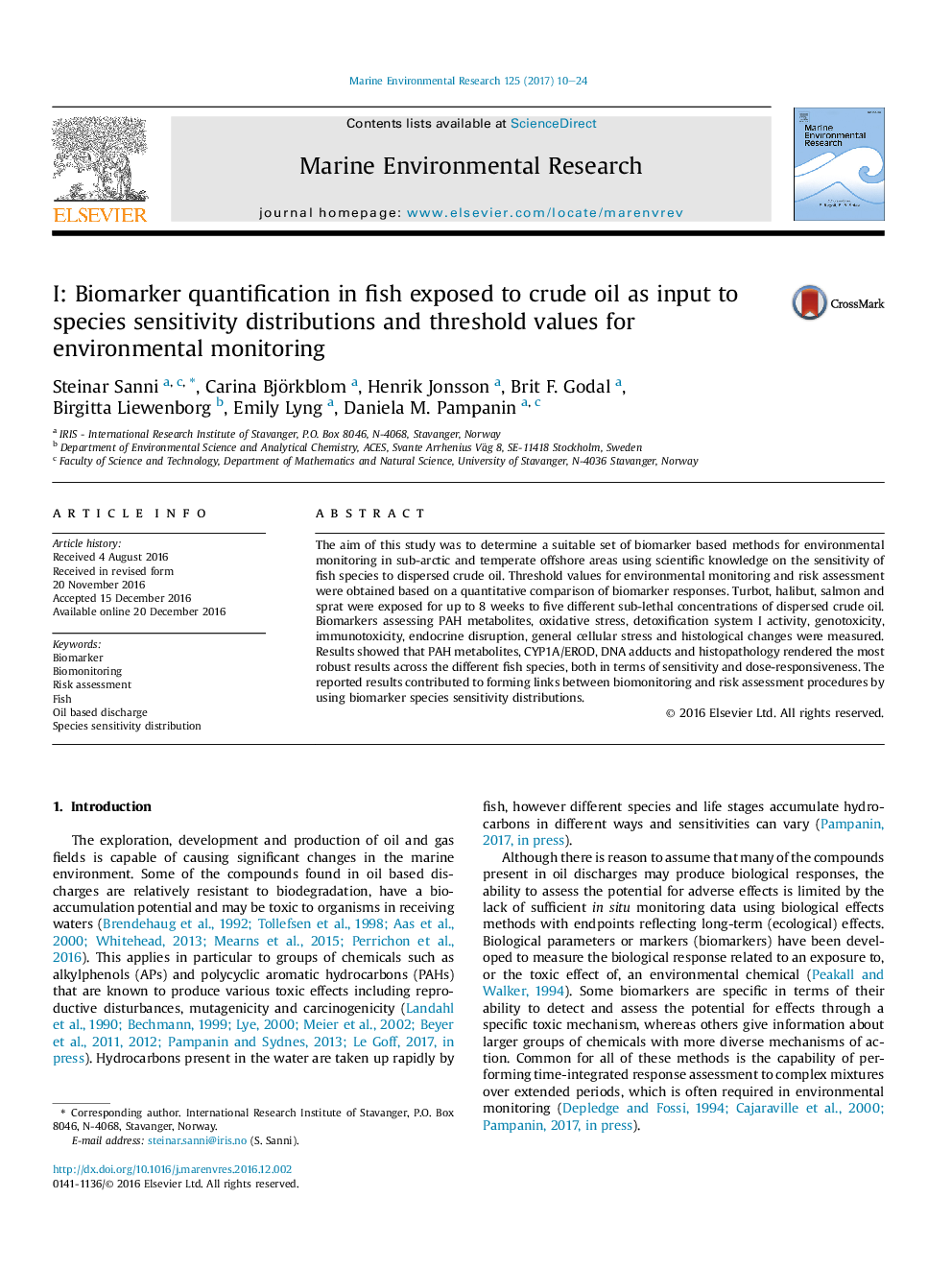| Article ID | Journal | Published Year | Pages | File Type |
|---|---|---|---|---|
| 5766226 | Marine Environmental Research | 2017 | 15 Pages |
â¢Five different species exposed to sub-lethal concentrations of dispersed crude oil.â¢Biomarker threshold values for environmental monitoring and ERA.â¢Selection of biomarkers that can be used to the establishment of biomarker based SSDs.â¢Responsive biomarkers showed dose dependant response (LOEC value determination).â¢LOEC values will contribution to the establishment of biomarker based SSDs.
The aim of this study was to determine a suitable set of biomarker based methods for environmental monitoring in sub-arctic and temperate offshore areas using scientific knowledge on the sensitivity of fish species to dispersed crude oil. Threshold values for environmental monitoring and risk assessment were obtained based on a quantitative comparison of biomarker responses. Turbot, halibut, salmon and sprat were exposed for up to 8 weeks to five different sub-lethal concentrations of dispersed crude oil. Biomarkers assessing PAH metabolites, oxidative stress, detoxification system I activity, genotoxicity, immunotoxicity, endocrine disruption, general cellular stress and histological changes were measured. Results showed that PAH metabolites, CYP1A/EROD, DNA adducts and histopathology rendered the most robust results across the different fish species, both in terms of sensitivity and dose-responsiveness. The reported results contributed to forming links between biomonitoring and risk assessment procedures by using biomarker species sensitivity distributions.
